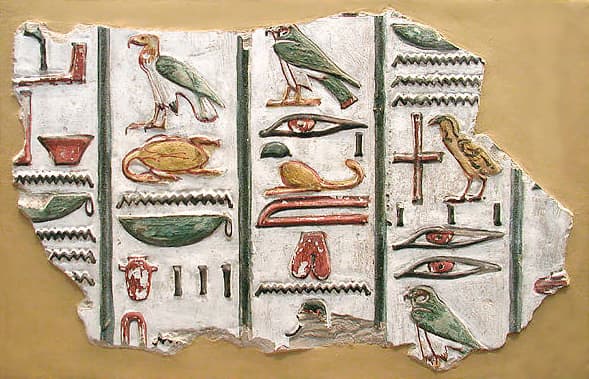Myths about teaching can hold you back
- Year 3
Change and continuity in Ancient Egypt
I can describe how much things stayed the same across 3,000 years of Ancient Egyptian history.
- Year 3
Change and continuity in Ancient Egypt
I can describe how much things stayed the same across 3,000 years of Ancient Egyptian history.
These resources will be removed by end of Summer Term 2025.
Switch to our new teaching resources now - designed by teachers and leading subject experts, and tested in classrooms.
These resources were created for remote use during the pandemic and are not designed for classroom teaching.
Lesson details
Key learning points
- The River Nile remained the heart of the civilisation and was always highly important for the fertility it brought.
- The pharaohs ruled throughout this time, but where and how they were buried changed over time.
- While beliefs about the afterlife stayed the same, the methods of preserving bodies became very advanced over time.
- Detailed hieroglyphs were used throughout, but gradually were used less and usually just for religious writings.
- A good description of how much things stayed the same will use knowledge from throughout this unit.
Keywords
Continuity - continuity is when things stay the same over a long period of time
Common misconception
It can be difficult for young learners to grasp how long 3000 years actually is and therefore appreciate just how long standing and important the Ancient Egyptian civilisation was.
Draw a timeline with 1AD in the middle, 2086 BCE on the left end and 2024 on the right end. Use this to demonstrate that the Ancient Egyptians existed for even longer than the time that has passed since 1 AD to today.
To help you plan your year 3 history lesson on: Change and continuity in Ancient Egypt, download all teaching resources for free and adapt to suit your pupils' needs...
To help you plan your year 3 history lesson on: Change and continuity in Ancient Egypt, download all teaching resources for free and adapt to suit your pupils' needs.
The starter quiz will activate and check your pupils' prior knowledge, with versions available both with and without answers in PDF format.
We use learning cycles to break down learning into key concepts or ideas linked to the learning outcome. Each learning cycle features explanations with checks for understanding and practice tasks with feedback. All of this is found in our slide decks, ready for you to download and edit. The practice tasks are also available as printable worksheets and some lessons have additional materials with extra material you might need for teaching the lesson.
The assessment exit quiz will test your pupils' understanding of the key learning points.
Our video is a tool for planning, showing how other teachers might teach the lesson, offering helpful tips, modelled explanations and inspiration for your own delivery in the classroom. Plus, you can set it as homework or revision for pupils and keep their learning on track by sharing an online pupil version of this lesson.
Explore more key stage 2 history lessons from the Ancient Egypt: what stayed the same across 3,000 years? unit, dive into the full primary history curriculum, or learn more about lesson planning.

Equipment
Content guidance
- Depiction or discussion of sensitive content
Supervision
Adult supervision recommended
Licence
Prior knowledge starter quiz
6 Questions
Q1.Rearrange the letters to make the name of a river in Egypt.
Q2.What title was given to the rulers of Ancient Egypt?
Q3.What did Ancient Egyptians believe happened to the soul after death?
Q4.What name was given to the process used in Ancient Egypt to protect dead bodies from decay?
Q5.Match the words to the definitions.
treating a dead body with oils and herbs to preserve it
a set of beliefs about gods
the Ancient Egyptian word for the soul
a sealed room for holding a dead body
Q6.What is the name of the Ancient Egyptian writing that used pictures and symbols?



